“The Circular Ring Slim is lightweight and comfortable to wear. Unfortunately, that's largely where the positives end.”
- Comfortable to wear
- App contains plenty of data
- General advice can be informative
- Aluminum isn't durable enough
- Charger is inconvenient
- Unreliable features, data, and app
- Subscription or extra fees coming in the future
- No third-party app integration
We’re at that stage where smart rings are becoming more popular. That means there are more choices, and we must be more vigilant before buying one.
A great example of why we need to pay more attention is the Circular Ring Slim, which may look attractive but is flawed in ways that make it unappealing. It’s certainly not all bad, but if you’re in the market for a smart ring, there are plenty of others you should consider first.
About our Circular Ring Slim review

We first published our Circular Ring Slim review in March 2024, based on several weeks of use of the ring and app. Circular announced a revised version with a few small alterations in June, and we wore this version for a further three weeks to assess changes.
Most of our review is based on the original version, as it’s largely unchanged from the revised model. However, we have added a new section below that covers the updated model only. We also altered relevant information throughout the rest of the review. The score has not been changed after using the revised version.
Wearing the new Circular Ring Slim

Wondering how you can tell the difference between the two Circular Ring Slim models? Look at the logo, which is white on the original version but is black and blends in with the ring’s finish on the updated model. It’s the only real visual clue you get, but I do find the overall fit-and-finish to be better with the updated version. It feels exactly the same on your finger, though, and the design is still the same. Circular says it has improved scratch resistance, but my review model has still picked up scratches even in the short time I’ve worn it. The ring now has an IP68 water and dust resistance rating, up from an IPX8 before.
Circular also promoted a few changes to the app with the new hardware, but most of the features had been added beforehand. Unfortunately, it still has not made the subscription and ongoing costs involved in owning the Ring Slim clear at all, and we’ve added a new section on the situation toward the end of our review. Going back to the revised Ring Slim, it’s essentially exactly the same as the last one, and while I did not find any app or connectivity reliability problems this time, the data still wasn’t all that helpful, and other issues still exist.
Since I reviewed the Circular Ring Slim, Samsung has announced the Galaxy Ring, and even in the short time I’ve tried it and seen the data presented in the app, it’s already looking like a far better purchase than the Circular Ring Slim. The same goes for the Oura Ring, which I’ve now worn for three years in total, and consider it the benchmark for smart rings, even with the subscription model. We’d suggest you buy either of them instead of the Circular Ring Slim.
Circular Ring Slim: design
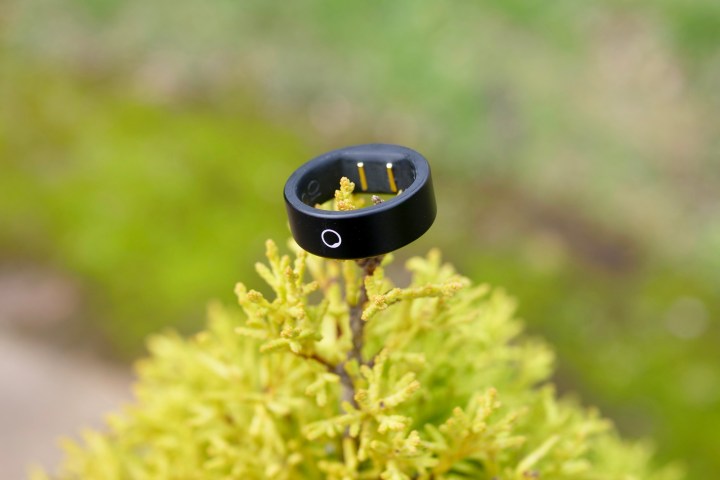
The Circular Ring Slim lives up to its name, as the slender shape makes it easily one of the most comfortable smart rings I’ve worn. It’s a combination of the lightness and the slim case, which means I feel it less between my fingers and am sometimes not even aware it’s there at all. On several occasions, I’ve felt it with my thumb to make sure I’m wearing it after a sudden feeling I’d forgotten to put it back on after charging. It is about a millimeter wider than the Oura Ring, but I have not noticed any real difference on my finger.
The outside is entirely circular, while the inner part has a flat section where two metal plates for charging sit (next to the heart rate sensor set slightly to the side). When it’s hot, and your finger expands, this part is quite noticeable and not all that comfortable, so make sure you choose the size wisely. The design is unassuming and ordinary, unlike the far more stylish Oura Ring, and only comes in a single matte black finish. The Circular Ring Slim doesn’t take inspiration from jewelry like the Oura Ring and follows the same design path as the Ultrahuman Air, appearing more like a functional product than something you’d choose to wear to complement your look or to make a fashion statement.

I may not think the design is very inspiring, but others may like the mostly incognito look. The updated Circular Ring Slim has a black logo instead of the very obvious white one on the earlier model, and you can see the difference it makes in some of our photos. It also serves a purpose as the Circular Ring Slim has a vibrating alarm, and you’re supposed to tap the logo twice to stop it from vibrating. I say “supposed to,” as despite setting the alarm on the original version multiple times, it never vibrated to wake me up once.
However, I have found it works for the Medication Reminder feature, where it vibrates at set times to remind you to take medication and also sends a push notification to your phone. The vibration on your finger is very noticeable and impossible to miss, and it’s a very helpful feature. It’s a shame, then, that at some point in the future, this will become a pay feature. More on this later on in the review. I had high hopes when I first put the Circular Ring Slim on. If the functionality could match the outstanding comfort, it could easily become an Oura Ring competitor. Unfortunately, this would turn out to be one of the very few upsides to the Circular Ring Slim.
Circular Ring Slim: durability and reliability

Unlike the Oura Ring and the Ultrahuman Ring Air, the Circular Ring Slim is not made of titanium. It’s made of aluminum, and it really shows. When I wore the original Ring Slim for just a few weeks, it picked up chips and scratches on the underside, revealing the metal beneath the matte black finish. Despite the claim the revised model has improved durability, this has been repeated on the new Ring Slim too. I have not done anything I haven’t done wearing the Oura or other titanium rings, which have not been marked in the same way over a much longer period of time. The smart ring has an IP68 water and dust resistance rating.
The syncing process between the ring and your phone takes a long time, as the app imports data from the ring, syncs with the cloud, and then returns the data to the app. At this point, it mostly shows your stats, but it always takes a few moments before it all appears. It’s frustrating when the Oura Ring syncs and presents data in a few seconds. While I understand not everyone will demand to see their data in the app instantly, watching the progress bar in the app slowly make its way across the screen borders on the painful, and it’s one of the longest syncing systems I’ve encountered.
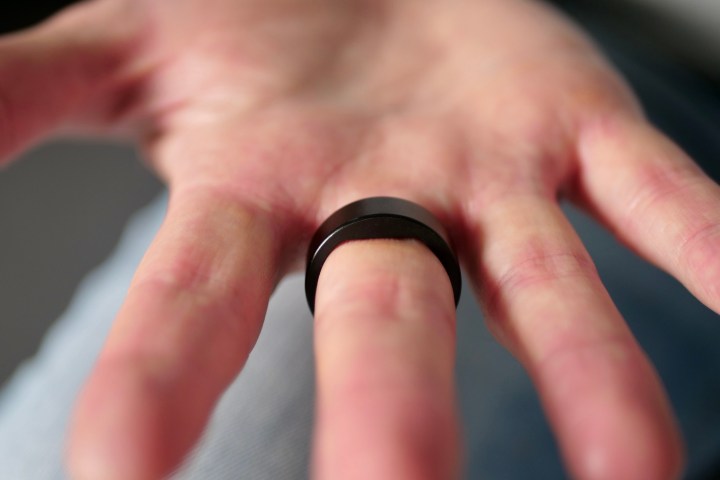
During my original test, I also encountered a problem where the app suddenly forgot the smart ring entirely, which prompted me to go through a convoluted reset process. This process involved putting the ring on the charger, taking it off 10 times in a row, and waiting for a non-specific vibration to alert me that it had been reset. I did this many times, usually unsure if the vibration alert was the one I should be looking out for, as it vibrates when you put it on charge anyway, but the ring refused to reconnect.
Eventually, the problem seemed to cure itself, but it left me wondering if (or when) it would happen again. Poor user experiences like this make the Circular Ring Slim feel unfinished. With the revised model, things seemed to improve, and I had no reliability problems. I even swapped the ring and app between phones with little fuss, so experiences may vary. The app and smart ring have received various software and firmware updates during my time using it, and these may have cured some of the problems I have encountered, but as they are intermittent, it’s hard to assess.
Circular Ring Slim: sleep and activity tracking
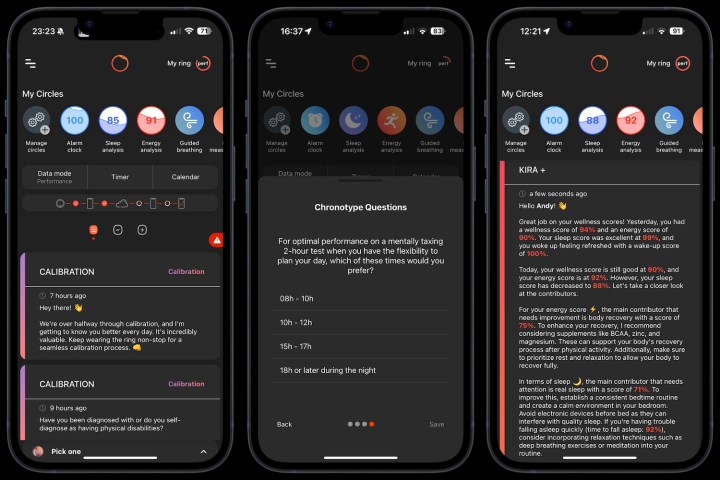
The reason you will want to wear a smart ring is to gain more insight into your health and wellness. The Circular Ring Slim tracks your sleep and basic activity during the day; and there’s a new Heart Rate During Sport measurement for some basic exercise tracking. It needs to make up for its basic exercise tracking by being a sleep-tracking superstar, but sadly, it’s not. It tracks sleep, but it’s not always very good at it, which then throws off all the other data it collects and the recommendations it makes.
Here’s an example. More than once, it has noticed when I’ve sat down in the early evening, and then it promptly decided I’ve fallen asleep. It then sees every subsequent movement before I actually go to bed as me waking up. By the morning, it thinks I’ve had hours more sleep than I’ve actually had, and with multiple awakenings. It skews all the data from this point, rendering anything it recommends entirely wrong. With the revised model, it did the opposite and didn’t recognize when I went to bed at all. It doesn’t happen all the time, and the Circular Ring Slim does usually get it right, but it lowers trust.
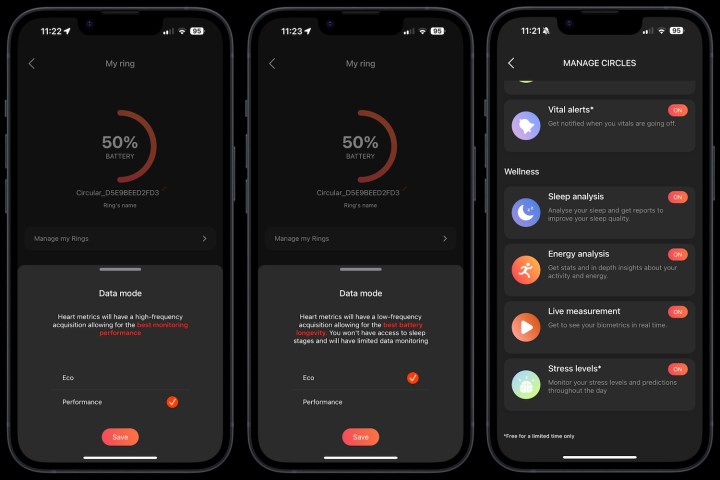
This all happened after the incredibly long 14-day calibration period, so I can’t pass it off as the ring just getting to know me. During this run-in time, the app asks a lot of questions, some of which are confusingly worded and hard to answer. However, the overall accuracy of the data did improve after those two weeks, so you should stick to it. Once that period had passed, the Circular Ring Slim’s “AI assistant,” Kira, comes along to provide daily recommendations and assess current performance and where you can improve.
Its advice is fairly generic stuff, and it can sometimes feel completely at odds with your body and schedule, too. I woke up to find a notification on my phone from the Circular Ring telling me that it was the perfect time for me to get some sunlight, which it sent about 5:30 a.m., and that didn’t seem very helpful at all. For the revised model, it sent me notifications at about 6:00 a.m. telling me it was the ideal window for me to eat. This aside, Kira does concisely present how your day compares to the previous few, which can help you understand where you can improve, and it does use percentages effectively to illustrate where you should try and make changes.
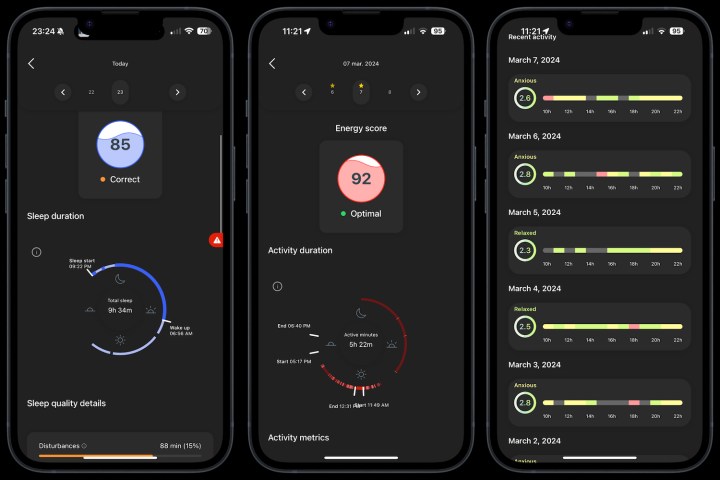
In addition to tracking sleep and basic activity, the Circular Ring Slim monitors stress levels and presents all the usual data points — including steps, heart rate variability (HRV), resting heart rate, blood oxygen levels, skin temperature, and breathing rate. Graphs include information on activity intensity and calories burned. The app has a button to check all these stats in real time, too. The Circular Ring Slim’s app does connect with Apple Health and Google Fit but not any third-party apps, so if you exercise with Strava or a similar app, it won’t import or share data.
Circular Ring Slim: is the data helpful?
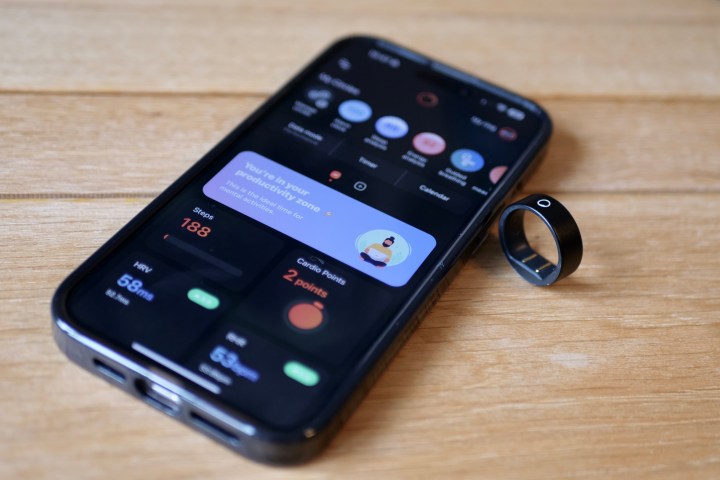
The Circular Ring Slim provides three main scores for your day: Sleep Analysis, Energy Analysis, and Alarm Clock. The Alarm Clock is an odd one, as it’s mostly a screen to set your daily alarm, but it also shows if you woke up during the ideal sleep stage. The Sleep Analysis tab gives an overall sleep score, uses line graphs to present its data, and has a hard-to-interpret Sleep Duration chart.
Under the Energy Analysis page, daily movement is broken down into different sections, including a score for VO2 Max, plus line graphs on recovery, balance, and any variations in temperature and sleep quality. There are some historical graphs, but they’re hidden away and not all data gets treated and shown in the same way, so it’s quite hard to see exactly how your body has changed over time. You’d think the tab marked Calendar would show you a helicopter view of your stats, but it doesn’t and only shows a day-by-day.
I’ve never felt like I really knew what was going on with my body and sleep through the Circular app.
The app’s main screen shows what zone your body is supposedly in, such as a Productivity zone, and when it’s a good time to drink coffee, eat, or wind down for sleep. You have to check the app to see this information, though, as despite having all the notifications switched on, I have not received any on my phone regarding my zones. The Ring Slim has been connected to an Apple iPhone 15 Pro Max, and the app is also available for Android phones.
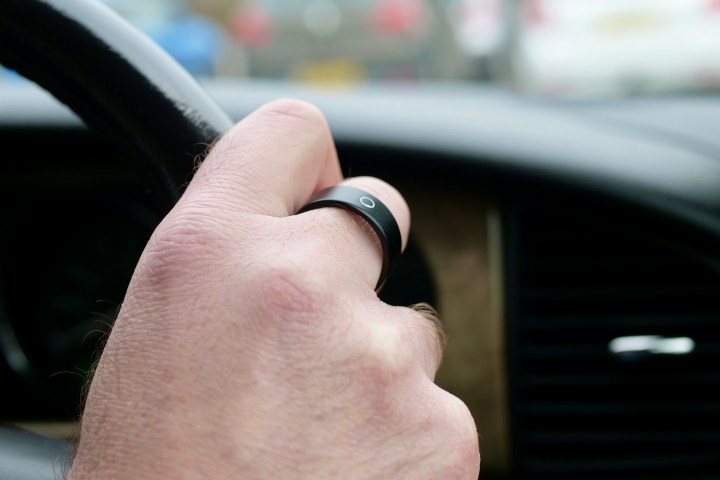
The app also shows a Cardio Points metric, but it doesn’t really explain how this is created, what it means, and how you can manipulate it. You’re also rewarded with “coins” for meeting various targets, and it cryptically teases you about how these may become useful in the future. The Circular app shows data, but unlike the Oura Ring’s app, it’s not very friendly to view, with its main scores placed in a section easily mistaken for a basic menu, and it doesn’t do a good job of really highlighting its scores.
I’ve never felt like I really knew what was going on with my body and sleep through the Circular app, and outside of Kira’s daily recommendations, there’s not much motivation or advice. It’s disappointing the app doesn’t highlight the core figures based on your data much, resulting in an app that feels a little thrown together rather than specifically designed.
Circular Ring Slim: battery and charging
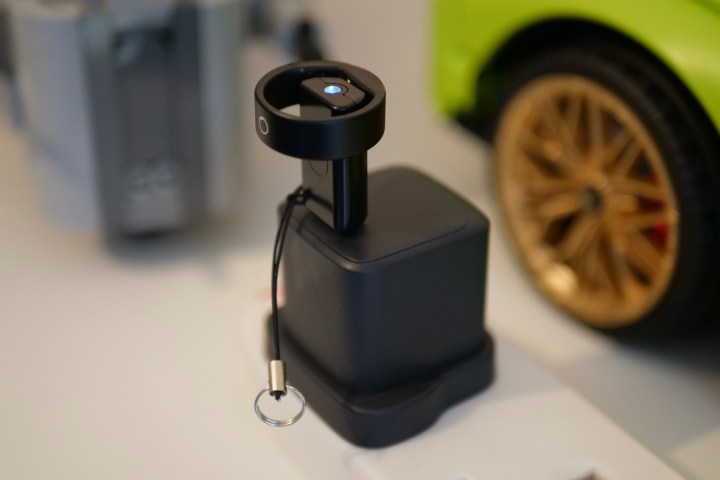
Circular claims the Ring Slim’s battery will last up to five days. During my time with the smart ring, it has lasted between two and four days on a single charge. This is several days less than the Oura Ring and the RingConn Smart Ring. There are two modes for the Ring Slim, Performance and Eco, and I’ve been using it only in the Performance mode. Why? Because Eco mode hobbles the heart rate sensor, doesn’t record sleep stages, and minimizes other data collection. If I’m going to wear a health and activity tracker, I want it to track my health and activity. I’m sure Eco would prolong battery life, but it’s pointless if it’s not doing much tracking.
The charger is one of the worst I’ve used. It’s about the same size as a USB thumb drive and has a USB C plug at one end and a pair of magnetic contacts at the other. The ring is attached to these contacts to charge. It takes some wobbling about to seat the ring properly, and it’s not all that secure once it’s in place. But worse than that is the whole inconvenience of the thing.
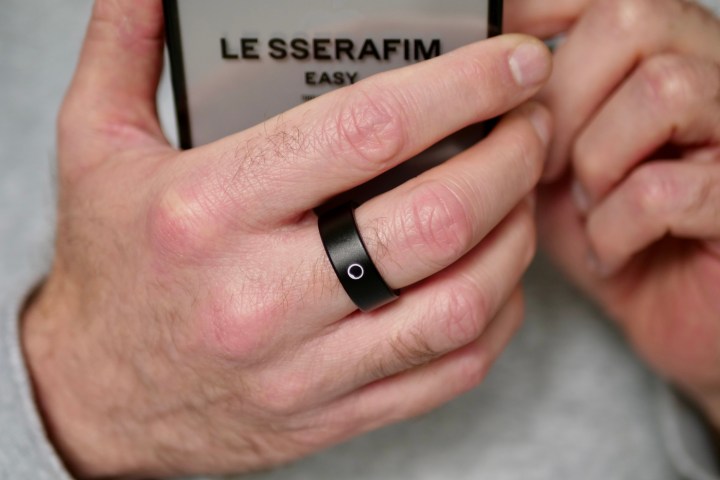
Because it doesn’t connect to a USB cable, it has to connect directly to a power adaptor plugged into a wall socket, and rarely are these set in a very convenient spot. Other smart rings use a charging puck linked to a cable, so it can be placed on your bedside table, ready to hold and charge the ring while you shower in the morning. You’ll have to fumble about next to the plug on the wall to do this with the Circular Ring Slim. It seems to take about an hour to recharge, and although I have seen one or two notifications telling me the ring is fully charged, most of the time, it doesn’t bother letting me know.
Circular Ring Slim: does it have a subscription?

Across its website, Circular will tell you the app is free to use, and there is no subscription, meaning once you’ve paid for the smart ring, that’s it. Well, this isn’t entirely accurate. The first hint comes when you see the Medication Reminder and Advanced Analytics sections are highlighted in the app as only being free for a limited time. When quizzed about the situation, Circular told Digital Trends in an email:
“Circular currently operates a buy-once model, where customers get full access to its current features within the app. All basic measurements will always be free to the user; however, the company is considering a premium model for advanced features it will launch in the future, as well as the two recently announced features — advanced analysis and medication reminders — that are in today’s app. There is no timeline or pricing available at present as it is still under consideration, however any changes will be communicated well in advance should they move ahead with this model.”
The language used is confusing, as what constitutes “basic” and “advanced” features isn’t clear, and the company is unwilling to clarify any further. Changes have been made in the app since I last used it, too, as originally, the Stress Levels Circle was going to cost extra, but now it seems to have been saved from that fate. It leaves you with a decision: Buy the Circular Ring Slim and wait to see when a subscription plan comes in, what it changes, and how much it costs — or just buy a different smart ring that’s transparent about ongoing costs from the beginning. It’s simply impossible to recommend a product when we know some features will cost extra in the future, but not how much or when, or which other features the company may suddenly decide to charge for, too.
Circular Ring Slim: price and availability
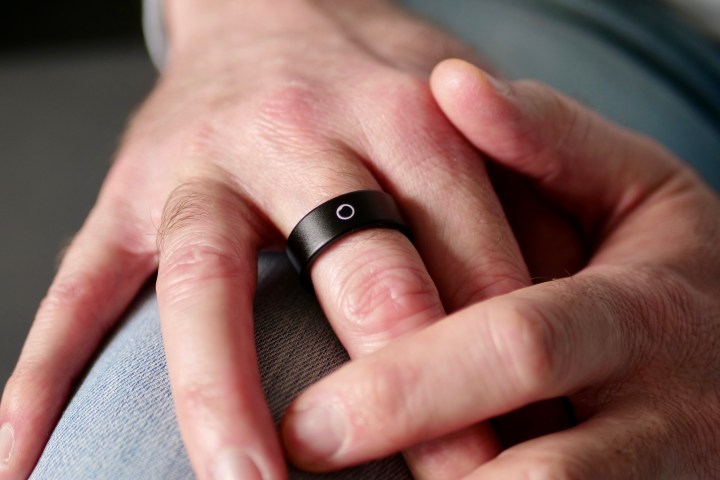
The Circular Ring Slim’s pricing changes, so be careful. When we first reviewed it, the Ring Slim cost 259 euros, but the revised model is listed on the company’s website for 294 euros at the time of writing (July 2024), which converts to about $321. There’s also a version without the vibration motor inside, which we have not tested, that costs 204 euros, or around $223.
What should you buy instead? The Oura Ring starts at $299 and requires a subscription of $6/month to use, while the RingConn Smart Ring is $279 and the Ultrahuman Ring Air is $349 and are both subscription-free. All three are better buys, but the Oura Ring remains the best. We have not fully reviewed the $399 Samsung Galaxy Ring yet, but first impressions are very good, and it does not have a subscription attached to it. Alternatively, the Apple Watch Series 9 and Samsung Galaxy Watch 6 Classic are great smartwatches that do much more than the Circular Ring Slim and are more reliable.
Circular Ring Slim: verdict
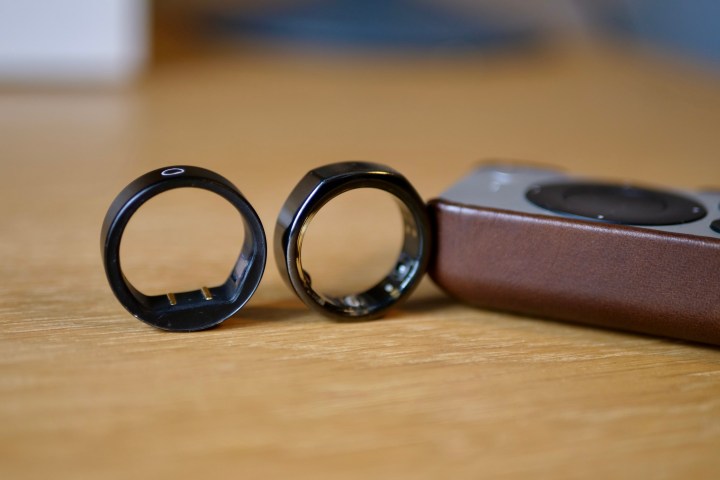
Rather optimistically, the Circular Ring Slim’s information page says it was “Forged in Mordor,” a reference to J.R.R. Tolkien’s Lord of the Rings series. Well, you absolutely should not go on an epic journey to get the Circular Ring Slim, and it’s highly unlikely to become anyone’s “precious” if one is obtained, either.
From the concerning durability and the poor charging system, to the disappointing battery life and questionable accuracy and reliability, the entire package lacks polish. Indicating certain features will cost money in the future, but not saying how much or when, is unfair to consumers. Circular as a company started life on crowdfunding platforms, and although the Ring Slim wasn’t launched this way, it definitely has the same air to it. The concept is strong, but the execution isn’t.
The Circular Ring Slim shouldn’t be on your shopping list.
My weeks testing the Circular Ring Slim have been tumultuous. It hasn’t been the silent, reliable partner I expect a modern, fairly expensive health tracker to be, and having to put in so much effort so early on doesn’t bode well for me wanting to continue using it in the long term. This is a huge problem for a wearable device. My woes are not unusual either if the subreddit on Circular’s products is anything to go by. If my overall score seems harsh, it reflects how many aspects of the Circular Ring Slim need improvement before it becomes one to think about buying.
Smart rings are still in their infancy, and as more models make their way out into the world, you need to be careful about which one to buy. Right now, the Circular Ring Slim shouldn’t be on your shopping list. The Oura Ring remains the best smart ring you can get, and we have a feeling the Galaxy Ring will be a very close competitor, or you can choose between any of the top smartwatches and get a far better product and service you’ll want to carry on using for years.




